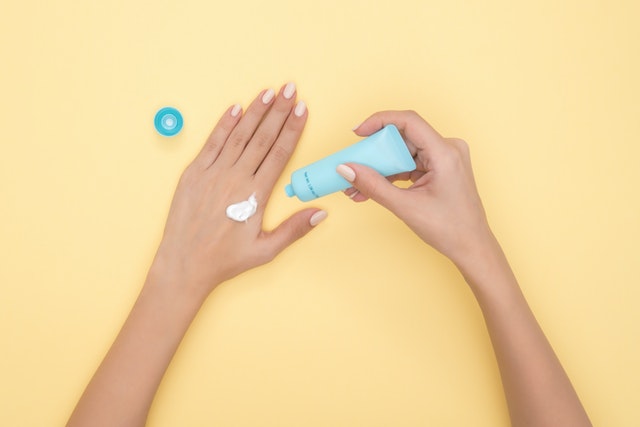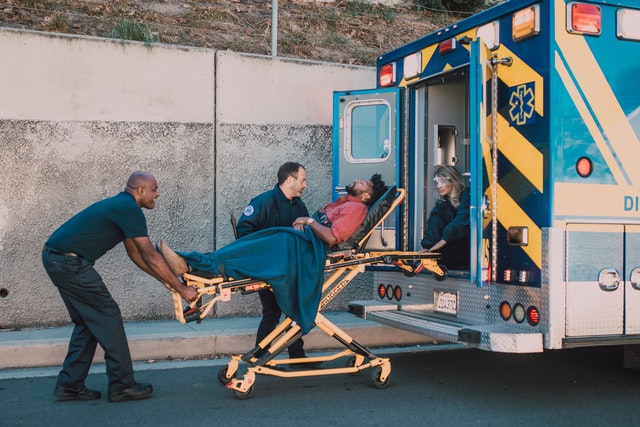Burns can happen anywhere and at any time. Knowing how to treat your burn properly ensures that there’s no lasting damage to your skin or bones.
Most burns are mild and can be treated with home remedies, such as Neosporin or aloe vera. However, serious burns will require medical attention.
How Bad is Your Burn?
If you’ve been burned, the first thing you need to determine is just how bad the burn is. There are four major types of burn injuries.
1. First Degree Burns
First-degree burns are mild, superficial burns that only reach the epidermis (the outermost layer of skin). These are the most common burns caused by short exposure to heat from a hot pan or hot water, for example.
Common symptoms of first-degree burns include reddening, sensitive, or dry skin but no blisters. Pain typically lasts 24 to 48 hours.
2. Second Degree Burns
Second-degree burns can reach the epidermis and the dermis (lower layer of skin). These burns can be caused by electricity, sunburns, flames, or exposure to chemicals. Even long exposure to the sun without protection can cause second-degree burns.
Second-degree burns cause more pain, including blisters, redness, and swelling around the burn. Pain typically lasts 48 to 72 hours.
3. Third Degree Burns
Third-degree burns are the worst level of burn. These burns get deeper than first and second-degree burns and affect the underlying tissues.
Third-degree burns can be caused by more prolonged exposure to hot objects such as boiling water or flames. Chemical burns and electricity can also cause third-degree burns.
Common symptoms include intense blistering, reddening, and swelling of the skin. In some cases, the skin may appear charred or blackened. The surrounding skin may be numb as well. Pain from a third-degree burn can last more than a week.
4. Fourth Degree Burns
Fourth-degree burns (sometimes called intense third-degree burns) are the least common.
They affect the skin, the tissue, and potentially the underlying muscle and bone. These are typically the result of serious exposure to heat, chemicals, or electricity.

Treating a Burn With Home Remedies: Neosporin, Aloe, and More
When the burn occurs, you should soak the affected area in cold water before applying any home remedies.
Most first-degree and second-degree burns will heal on their own within a few days. Some second-degree burns that affect large sections of your body may need a prescribed antibiotic.
There are numerous home remedies that can help treat mild first and second-degree burns:
- Ice packs or cold compresses can help reduce swelling and redness.
- Lotion, if applied regularly, will make sure the affected area doesn’t become dry or irritable.
- Antibiotic ointments such as Neosporin or Bacitracin can help prevent infection and speed up the healing process. After applying it Neosporin on a burn, make sure you cover the area with a clean cloth or cling film.
- Aloe vera gives you a cooling feeling and has anti-inflammatory properties, both of which help first-degree burns.
- Over-the-counter painkillers ease the pain of a burn. Ibuprofen, Advil, or other anti-inflammatory medications can help.
If you or your child has an allergy, make sure to consult your doctor before using any medications or ointments.
When Should I Visit a Doctor For My Burn?
There are several scenarios where you will need to visit a doctor about your burn. The location, severity, size, and side effects of the burn can all warrant a trip to the doctor in certain situations.
Burns to the following areas should be examined by a doctor:
- Face
- Head
- Hands
- Feet
- Genital regions
Burns to the hand should be taken very seriously, especially with children.
The skin and tissue around the hand are sensitive. If not treated properly, burns to the hand can cause permanent damage. Even second-degree burns to the hand should be examined by a doctor.
Generally, if the burn affects an area larger than the size of your palm, you should visit a doctor.
Mild burns that cover your entire arm or leg need to be treated as well. For severe burns, only an inch wide injury already requires medical attention.
If your burn worsens 1-2 days after it occurs, you should consult a doctor. Worsened symptoms include:
- More pain
- Redness
- Swelling
- Darkening of the skin
- Liquid or odors coming from the burn
These symptoms may mean there is underlying damage to the skin or bone. They may also mean that the burn has become infected.
The cause of your burn also matters. While mild burns from hot water may not warrant medical attention, even mild burns from extreme heat, dangerous chemicals, or electricity should be seen by a doctor.
When Should I Call an Ambulance For My Burn?
Third and fourth-degree burns are always an emergency. You should call for an ambulance.
It’s not always easy to tell the difference between a second, third, or fourth-degree burn. If you have any doubt, it is best to get medical help right away.
You should call an ambulance if:
- The burn is covering a large portion of the body such as the entire back, arms, or legs.
- The pain resulting from the burn is intense and leaves you incapable of walking
- The damaged skin is blackened or charred
- The underlying tissue, muscle, or bone is visible
- You have lost feeling in the affected area
- The burn victim has lost consciousness
How to Call an Ambulance
To call an ambulance simply dial 911.
The operator will need to know the following information:
- The name of the person who was burned
- The cause of the burn
- The damage resulting from the burn such as the area affected
- The location of the emergency such as a street address
- The location of the burn victim at that address
- The phone number you are calling from
Stay on the phone with the operator until they have all the information they need.
If you can, stay on the line with the operator until the ambulance arrives to inform them of any changes or listen to their instructions to administer first aid.

How to Treat the Burn Victim
As you wait for the ambulance to arrive, there are some things you will want to avoid:
- Do not remove any clothing around the burned area. The clothing may be stuck to the burn.
- Do not apply any water.
- Do not apply any ointments or lotions.
Once the ambulance arrives, the EMTs and paramedics will take over. They have the skills necessary to minimize the damage of the burn.
Comments are closed.



Recent Comments